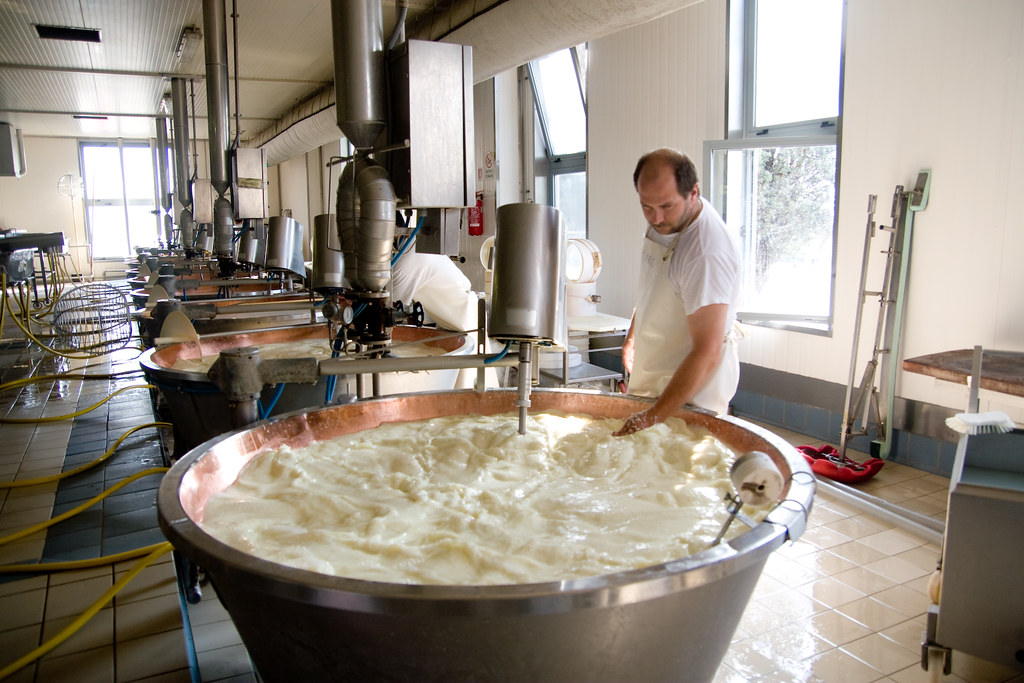Discovering Melbourne Made Cheese: Why Floridia Cheese Is a Must-Try
Discovering Melbourne Made Cheese: Why Floridia Cheese Is a Must-Try
Blog Article
Opening the Keys of Artisanal Cheese Making: A Step-by-Step Do It Yourself Overview
In the world of cooking workmanship, artisanal cheese making stands as a testament to the delicate equilibrium between tradition and development. As we begin on this journey to demystify the art of creating beautiful cheeses, we are faced with a tapestry of keys and abilities waiting to be unwinded.
Choosing the Right Milk
When getting started on the journey of artisanal cheese production, the selection of milk plays a crucial function in determining the high quality and qualities of the last product. The kind of milk chosen impacts the taste, structure, and on the whole profile of the cheese.
Additionally, the resource of the milk, whether from cows, goats, sheep, or buffalo, contributes unique flavors and features to the cheese. Each kind of milk brings its very own nuances, allowing for a broad variety of cheese selections to be crafted based on the picked milk.
Culturing and Coagulating
To launch the cheese-making procedure, the essential steps of culturing and coagulating should be thoroughly carried out to transform milk into curds and whey. Culturing includes introducing useful bacteria to the milk, which after that starts the fermentation process. These bacteria convert lactose (milk sugar) right into lactic acid, producing the acidic environment essential for coagulation. The kind of culture made use of can dramatically impact the taste, appearance, and ripening of the last cheese product.

The timing and temperature level control throughout culturing and coagulation are crucial factors that affect the final end result of the cheese. Correct execution of these actions is necessary to guarantee the wanted structure, taste, and consistency of the artisanal cheese being generated.
Draining and Pushing Curds
After the milk proteins have actually coagulated and the curds have been reduced to release whey, the following crucial action in artisanal cheese making involves draining and pushing the curds to accomplish the wanted texture and uniformity of the last cheese product. Draining pipes is the process of separating the curds from the whey. This can be done by moving the curds into a cheesecloth-lined bowl-shaped sieve or mold and mildew and enabling the whey to drain pipes off naturally. The time for draining pipes can differ depending upon the kind of cheese being made and the desired wetness web content.
Pushing aids eliminate any kind of continuing to be whey and compacts the curds to create a strong cheese wheel. Appropriate pressing and draining are essential steps that considerably impact the quality and characteristics of the artisanal cheese being produced.
Aging and Flavor Methods
Carrying out careful aging and flavoring techniques is pivotal in boosting the deepness and complexity of artisanal cheeses, elevating their taste accounts to charming degrees of improvement and elegance. Aging plays an important role in creating the one-of-a-kind flavors and textures that identify artisanal cheeses. Throughout the aging process, cheeses are saved in very carefully managed environments where variables such as humidity, temperature level, and airflow are adjusted to encourage the development of useful molds and germs. This controlled atmosphere allows celebrity to mature gradually, developing abundant tastes and complicated fragrances.
Seasoning strategies also contribute dramatically to the last taste of artisanal cheeses. Cheesemakers may select to present extra tastes by including components such as natural herbs, seasonings, or perhaps fruits into the cheese during the manufacturing procedure. In addition, some cheeses are washed or rubbed with different liquids, view such as salt water or alcohol, to boost their tastes and appearances.
Wrapping and Storing Cheeses

Conclusion
In verdict, understanding the art of artisanal cheese making involves thoroughly choosing the ideal milk, adhering to precise culturing and coagulating processes, draining and pressing curds successfully, and using numerous aging and flavor strategies. Bear moved here in mind to cover and save your cheeses properly to make certain ideal taste and structure growth.
Each kind of milk brings its very own subtleties, enabling for a large variety of cheese ranges to be crafted based on the selected milk.After the milk healthy proteins have coagulated and the curds have been cut to release whey, the next essential step in artisanal cheese making involves draining and pressing the curds to attain the wanted appearance and uniformity of the last cheese product. site here Many cheeses ought to be wrapped in wax paper or cheese paper to allow them to take a breath while shielding them from drying out. For cheeses that require to proceed aging, such as bloomy rinds or cleaned peels, guarantee they are stored in an amazing atmosphere like a cheese cave or a fridge established to the suitable temperature. By paying focus to the covering and storage of artisanal cheeses, cheese makers and fanatics can maintain the stability of these delicacies and totally enjoy their complex tastes.
Report this page